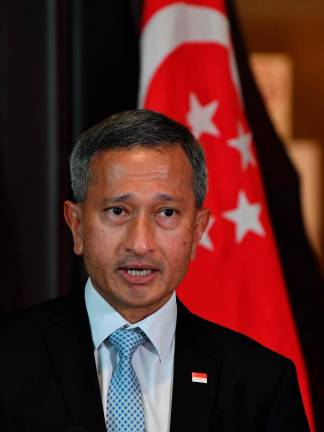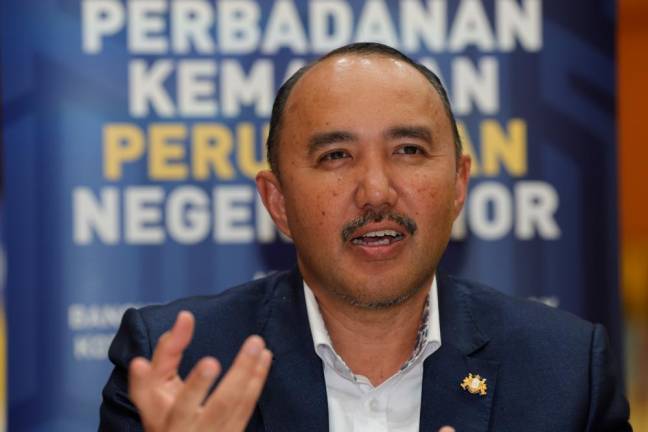BRUSSELS: The European Commission on Wednesday proposed tougher border controls and streamlined procedures for expelling rejected asylum seekers as its migration reform plan was criticised as a climbdown to appease anti-immigrant member states.
The long-awaited proposal for a “New Pact on Migration and Asylum” comes two weeks after fire destroyed an overcrowded camp on the Greek island of Lesbos, and five years after Europe’s last major migrant crisis.
It proposes that EU member states that do not want to volunteer to house more migrants — and reduce pressure on Italy and Greece, where most arrivals land — can instead take charge of sending those whose asylum requests are rejected back to their homelands.
“We want to live up to our values, and at the same time face the challenges of a globalised world,“ the president of the European Commission, Ursula von der Leyen, said, warning that the old system “no longer works”.
The proposal disappointed migrants’ rights activists and refugee agencies who had hoped for compulsory quotas for refugee settlement and an end to a “Fortress Europe” ringed by squalid refugee camps.
“It’s a compromise between xenophobia and cowardice,“ tweeted Francois Gemenne, Belgian migration expert and professor of environmental geopolitics.
But the plan is likely to face a rough reception in national capitals, many of which are reluctant to take charge of refugees on their own soil and keen to see Brussels take ownership of the problem.
Sceptical reception
Austrian Chancellor Sebastian Kurz told AFP that mandatory quotas for refugees for EU countries “won’t work”.
Poland, Hungary, the Czech Republic and Slovakia also oppose compulsory relocation, having torpedoed such plans after the 2015 migration crisis.
Their prime ministers — Mateusz Morawiecki of Poland, Andrej Babis of the Czech Republic, Slovakia’s Igor Matowic and Hungary’s Viktor Orban are due in Brussels to meet von der Leyen on Thursday.
Hungarian government spokesman Zoltan Kovacs said Budapest’s stand remains unchanged.
“We must ensure that the external borders of the EU and the Schengen Area remain perfectly sealed along all sections,“ he said.
But von der Leyen promises the new plan will deliver an accelerated process to remove migrants who are unlikely to obtain asylum.
European Commissioner for Home Affairs Ylva Johansson said the plans would make the EU “more effective” on returns.
For example, those from countries with a lower than 20% positive response rate to asylum applications, such as Tunisia or Morocco, will be processed at the border and within 12 weeks.
In the proposal, frontline countries under excessive migratory pressure such as Italy and Malta can request the activation of a “compulsory solidarity mechanism”.
All states will then be called on to contribute, according to their economic weight and population.
But in an EU innovation, they will be able to choose whether to receive asylum seekers, “sponsor” the return of migrants who do not have the right to stay or help to build reception centres.
This may not be enough for countries such as Sweden, which has a tradition of taking in refugees.
“As we understand things so far, it will now be possible to contribute in other ways, but if that’s the case then it has to be real measures,“ Migration Minister Morgan Johansson told news agency TT.
EU countries should not be allowed, for example, to send a nurse to help out for two weeks instead of taking in asylum seekers, he said.
‘Long live Dublin’
In the event of a crisis similar to that of 2015 — when more than a million refugees arrived, compared with only 140,000 per year now — the choice will be reduced to taking charge of relocating refugees or repatriating rejected migrants.
But if an EU country fails to return migrants to their country of origin within eight months, it must take them in — an idea that a European source admitted would be hard for smaller countries to accept.
Von der Leyen said last week the proposal would replace the “Dublin Regulation” with “a new European migration governance system” — but the plans unveiled on Wednesday stick pretty closely to the status quo.
The Dublin Regulation states that asylum claims must be processed by the migrant’s country of arrival, a rule that has angered southern members where seaborne migrants arrive.
In the Commission’s proposal, the country responsible for the application could instead be the one where a migrant has a relative or where he or she has worked or studied. Any country that issued a visa to a migrant will have to handle any asylum application.
Otherwise, however, the country of arrival is still responsible.
Observers said the plan as unveiled maintains more or less the same principle as Dublin, with some flexibility.
“It all looks like window dressing, it’s more or less Dublin is dead, long live Dublin,“ said migration researcher Yves Pascouau of the Jacques Delors Institute.
Marissa Ryan of aid agency Oxfam said the plan “bowed to pressure from EU governments whose only objective is to decrease the number of people granted protection in Europe”. — AFP













